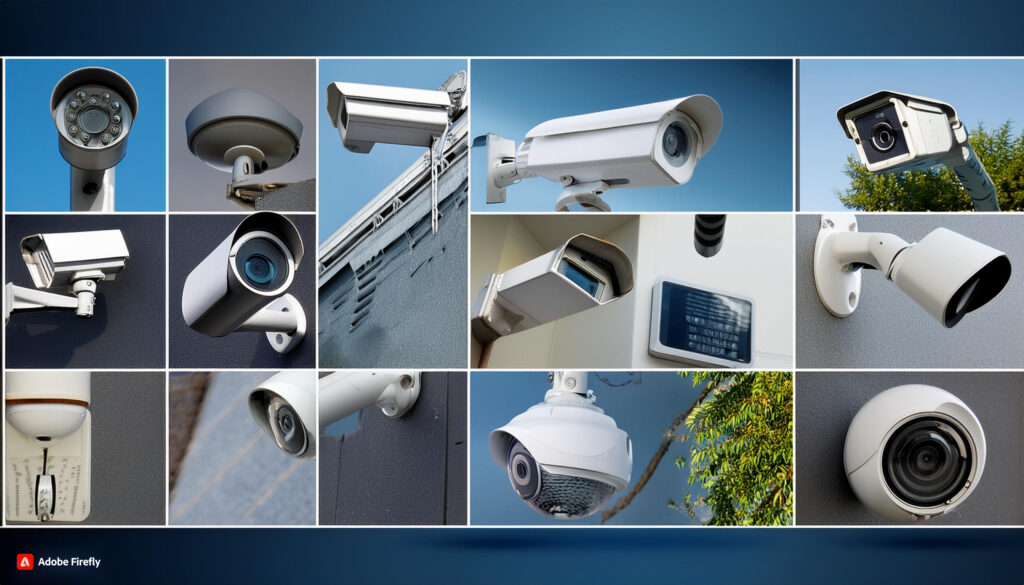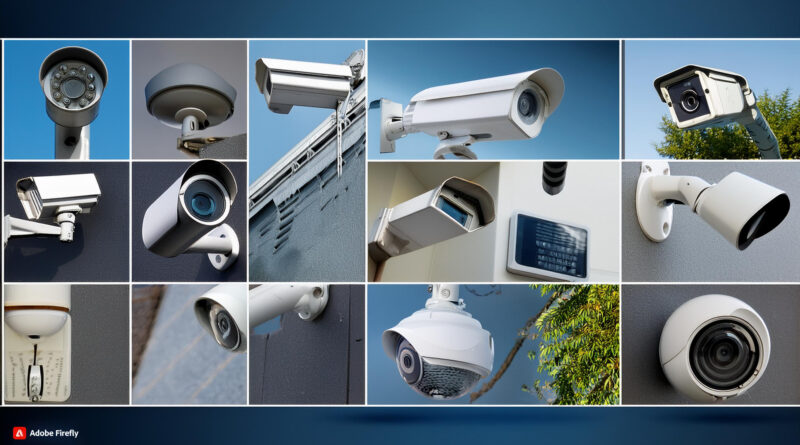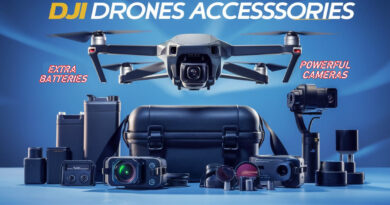Top features to look for in indoor and outdoor security cameras

In today’s security-conscious world, home surveillance cameras have become an essential tool for protecting our properties and loved ones. Whether you’re looking to monitor the inside of your home or keep an eye on your outdoor spaces, choosing the right security camera with the right features is crucial. This comprehensive guide will explore the top features to consider when selecting both indoor and outdoor security cameras, helping you make an informed decision to enhance your home security.
Video Quality and Resolution
One of the most critical features of any security camera is its video quality. Higher resolution cameras provide clearer, more detailed images, which can be crucial for identifying people or objects in recorded footage.
For indoor cameras, a resolution of 1080p Full HD is generally sufficient for most home security needs. This resolution offers clear images without consuming excessive storage space or bandwidth[1].
Outdoor cameras, however, often benefit from higher resolutions like 2K or even 4K. The Arlo Pro 4 Spotlight Camera, for example, captures stunning 2K video with a 160-degree field of view, making it effective for monitoring larger outdoor areas[5]. Higher resolutions are particularly useful for outdoor cameras as they need to capture details at greater distances and in varying lighting conditions.
Night Vision Capabilities
Effective night vision is essential for both indoor and outdoor cameras, as many security incidents occur after dark. Look for cameras with infrared (IR) LEDs that can illuminate the area without visible light.
Some advanced cameras, like the Ring Indoor Cam (2nd Gen), offer color night vision capabilities, providing more detailed footage in low-light conditions[2]. For outdoor cameras, the range of night vision is particularly important. The Arlo Pro 5S 2K, for instance, features color night vision that works very well to enhance images in dark conditions[5].
Field of View
The camera’s field of view determines how much area it can monitor. For indoor cameras, a field of view between 120 and 140 degrees is usually sufficient for most rooms. The Ring Indoor Cam (2nd Gen), for example, offers a wide 143-degree field of view[2].
Outdoor cameras often benefit from an even wider field of view. The Arlo Pro 4 Spotlight Camera boasts a 160-degree field of view, allowing it to cover large outdoor areas effectively[5]. Some outdoor cameras, like the Logitech Circle View, even offer an ultra-wide 180-degree field of view, making them ideal for monitoring expansive outdoor spaces[4].
Motion Detection and Alerts
Intelligent motion detection is a crucial feature for both indoor and outdoor cameras. Look for cameras that can distinguish between different types of motion, such as people, animals, or vehicles. This helps reduce false alarms and ensures you’re only notified of relevant activity.
Many modern cameras, like the Nest Cam (Indoor, wired), offer advanced features such as on-device facial recognition and customizable activity zones[3]. These features allow you to focus on specific areas within the camera’s view and receive alerts only for the types of motion you’re interested in.
For outdoor cameras, the ability to detect and differentiate between various types of motion is particularly important. The Arlo Pro 5S 2K, for instance, offers advanced object detection capabilities, allowing it to distinguish between people, animals, and vehicles[5].
Two-Way Audio
Two-way audio is a valuable feature for both indoor and outdoor cameras. It allows you to communicate with people near the camera, whether it’s family members inside your home or visitors at your front door.
Most modern security cameras, including the Blink Mini and YI 4pc Home Camera, offer two-way audio functionality[1][5]. This feature can be particularly useful for indoor cameras when you want to check in on pets or children, or for outdoor cameras when you need to speak with delivery personnel.
Weather Resistance (for Outdoor Cameras)
For outdoor cameras, weather resistance is crucial. Look for cameras with an IP (Ingress Protection) rating that indicates their level of protection against dust and water. The Arlo Pro 4 Spotlight Camera, for example, is designed for outdoor use with weather-resistant construction[5].
The IP rating consists of two digits: the first indicates protection against solid objects, and the second against liquids. For outdoor cameras, look for ratings like IP65 or higher, which provide strong protection against dust and water jets from any direction.
Storage Options
Security cameras typically offer two main storage options: local storage and cloud storage. Each has its advantages, and many cameras now offer both options.
Local storage, often in the form of a microSD card, allows you to store footage directly on the camera or a connected device. This option is usually more cost-effective in the long run and doesn’t require an internet connection to function. The Blink Mini, for example, offers local storage options when paired with a Sync Module 2[1].
Cloud storage, on the other hand, stores your footage on remote servers. This option provides better security against theft or damage to the camera itself, as the footage is stored off-site. Many cameras, like the Ring Indoor Cam, offer cloud storage through subscription plans[2].
Some cameras, like the Reolink TrackMix PoE 4K Dual-Lens PTZ, offer both local and cloud storage options, giving you flexibility in how you store and access your footage[1].
Smart Home Integration
In today’s connected world, the ability to integrate your security cameras with your smart home ecosystem is increasingly important. Look for cameras that are compatible with popular smart home platforms like Amazon Alexa, Google Assistant, or Apple HomeKit.
The Logitech Circle View, for instance, is designed exclusively for Apple HomeKit, offering seamless integration with Apple’s smart home ecosystem[4]. Other cameras, like the Arlo Pro 4, offer broad compatibility with various smart home systems, allowing you to control your cameras through voice commands or integrate them with other smart devices in your home[5].
Power Source
The power source of your camera can significantly impact its placement and ease of use. Indoor cameras are typically powered by a standard electrical outlet, which provides consistent power but may limit placement options.
Outdoor cameras often offer more flexible power options. Battery-powered cameras like the Arlo Pro 5S 2K provide the most flexibility in terms of placement, as they can be installed anywhere without the need for wiring[5]. Some outdoor cameras also offer solar panel options for continuous power without the need for frequent battery changes.
Privacy Features
With increasing concerns about privacy, many modern security cameras now offer enhanced privacy features. For indoor cameras, look for models with physical privacy shutters that can cover the lens when you don’t want the camera to be active.
The Ring Indoor Cam (2nd Gen), for example, features a manual privacy shutter that physically covers the lens and mutes the microphone, providing enhanced privacy control when needed[2]. For outdoor cameras, features like customizable privacy zones allow you to block out certain areas from being recorded, such as a neighbor’s property.
Additional Features to Consider
While the features mentioned above are crucial for most security camera setups, there are several additional features that can enhance your surveillance system:
1. Spotlight or Floodlight Integration: Some outdoor cameras, like the Arlo Pro 4 Spotlight Camera, include built-in spotlights. These can illuminate areas when motion is detected, potentially deterring intruders and providing color night vision[5].
2. Pan, Tilt, and Zoom (PTZ): Cameras with PTZ capabilities allow you to remotely adjust the camera’s view, providing more flexibility in monitoring different areas.
3. Facial Recognition: Advanced cameras may offer facial recognition features, allowing them to identify familiar faces and notify you of unknown visitors.
4. Package Detection: This feature is particularly useful for outdoor cameras monitoring your front porch, as it can alert you when packages are delivered.
5. Geofencing: Some cameras can use your smartphone’s location to automatically arm or disarm based on whether you’re home or away.
6. Continuous Recording: While most cameras record based on motion detection, some offer the option for 24/7 continuous recording, ensuring you never miss any activity.
7. Multi-Camera Support: If you’re planning a comprehensive security system, look for cameras that can easily integrate with multiple units, allowing you to monitor various areas of your property from a single app.
Conclusion
Choosing the right security camera for your needs involves carefully considering these features and how they align with your specific requirements. Whether you’re looking to monitor the inside of your home or secure your outdoor spaces, understanding these key features will help you make an informed decision.
Remember, the best security camera for you will depend on your unique situation, including the layout of your property, your budget, and your specific security concerns. By prioritizing the features that matter most to you, you can create a robust and effective home surveillance system that provides peace of mind and enhances the safety of your home and loved ones.






